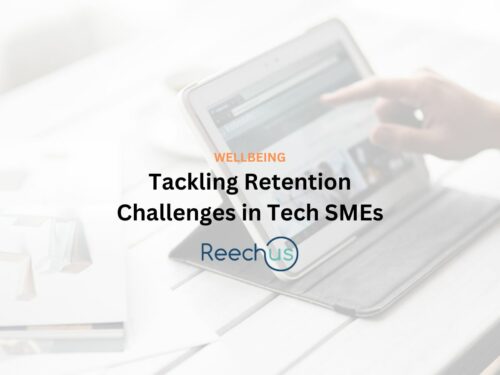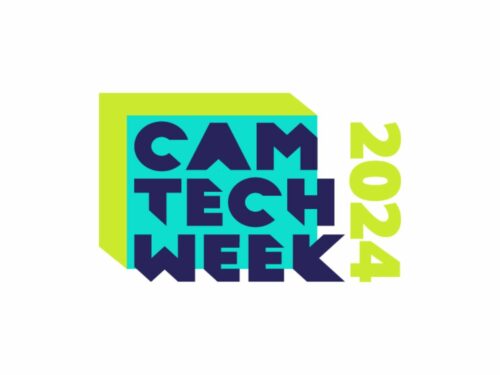Effective Strategies for a Thriving Workforce No company wants to lose their best players. The cost of recruiting and...
Member Spotlight – Downstream Innovation
 Matt Lawson – Downstream Innovation
Matt Lawson – Downstream Innovation
Tell us about Downstream Innovation – how did it begin? And what do you offer?
Downstream Innovation is all about helping companies improve their innovation capability. For larger companies this includes innovation tools, techniques, process, and how to structure for innovation. What processes should you put in place? How do you manage and track the portfolio of innovation projects across your organisation? How do you ensure innovation is downstreamed in your business? How do you create an innovation culture? How can you develop and grow intrapreneurs in a large corporate setting?
At the other end of scale, we support start-ups and SMEs, helping them get their proposition and pitch right. They’re often very proud of the tech they’ve created and its features, but they’re not always good at translating it into business language that is relevant to the customer they’re trying to reach. We can support the whole approach, from embryonic idea, to developing full pitch and proposition.
My previous role was Director of Applied Innovation at BT. I joined the company twenty-one years ago in R&D as a graduate and worked my way up to director. I was responsible for innovation projects across all of BT’s lines of business – up to fifty projects a year.
In my role, my team would host around 100-150 of BT’s top brand corporate customers globally through the innovation centre at Adastral Park. The conversation would regularly turn to how BT is structured for innovation – tools, methods, culture of innovation etc. They often wanted to know – how do we buy that from you? Well you couldn’t! We didn’t sell consultancy about how to successfully innovate. This was the first market opportunity I saw.
Another of my responsibilities involved a lot of tech scouting – engaging with start-ups and SMEs and looking at what was coming out of Silicon Valley and Israel. I saw a lot of start-up pitches – probably between thirty and fifty a year. I got good at identifying what was a good pitch and what was a less effective pitch. I also learned how to translate these pitches into customer and business language that the rest of BT would understand, knowing who the right decision makers were, and where the technology would successfully land. I saw this as a second market opportunity – these startups needed help.
I wanted to start my own business and these two customer needs came together, so I took the decision to leave BT eighteen months ago.

How do you define innovation?
I struggle with this one. I don’t have a single definition because I think there are different types of innovation. When I talk about it – I draw out the differences between technology push innovation and customer pull innovation, internal vs external, incremental vs disruptive. There are lots of different axes you can think about innovation on and where each company sits. Everything from a start-up, to a company trying a new venture, to call centre agents questioning where a button is located on a screen. It’s a scale and range.
What forms part of a good innovation strategy?
There needs to be senior-level objectives for each part of the business for what they are going to achieve longer-term vs purely short-term annual objectives. Many organisations are ‘next quarter’ focused. They’re concerned with their quarterly revenue and budget and struggle to think much beyond that. You need to incentivise an organisation from the top to have longer term aims and goals or they just won’t do it. The people that lead it must have a plan to nurture and drive innovation for the next year and potentially three years out…
The second issue is how you budget for innovation. Large organisations tend to side-line innovation allocating minimal budgets when available. Mostly funds are assigned to day-to-day operational costs and innovation comes at the bottom of the priority list. If you’re going to do it properly, you need to carve out budget for it as a priority and that budget cannot be raided. The other thing is to set “big hairy ass goals” – if you want to really be disruptive you’ve got to create big hairy ass goals such as – “we’re going into a new market – how the hell are we going to do it?” or “we’re going to only make electric vehicles instead of petrol from now on – how?”
The culture and tone you set in an organisation is probably the most significant factor for successful innovation. If anybody who puts their head above the parapet to suggest something new or different gets it blown off, no one else will risk trying. However, if they try and fail – and are then rewarded for trying to innovate, it encourages everyone else to try too.
What do you think are the biggest hurdles to innovation for businesses?
Short-term focus. Being focused on what’s going to happen next quarter, or the size of a bonus for achieving short term objectives causes trouble in the long-term. Performance management is another big killer of front line innovation in organisations, especially with things like enforced distribution curves for grading. Potential innovators who stick their head above the parapet risk becoming underperformers for the next quarter if they fail. It creates a culture of fear and mistrust – it’s the perfect poison for killing innovation.
Culture can be a significant hurdle. If you’re going to be successful in innovation you’ve got to get culture right. How you motivate and reward, what’s allowed and isn’t, how flexibly people are allowed to work, how you respond to ideas and suggestions – these are all critical factors. Typically, American companies generate 0.5 ideas per employee per year, and Japanese companies generate nine ideas per employee per year. On the other hand, Toyota generates seventy improvement ideas per employee per year – they have a culture that supports innovation.
Diversity is also vital to innovation otherwise people very quickly slip into ‘groupthink’. With a very similar set of mindsets and perspectives, nobody will ask challenging questions. It’s how organisations become blind to what’s really going on. Suddenly something disruptive arrives in their market and they don’t know how it happened.
Which companies – local or national – do you think have a strong culture of innovation? What are they doing to shape it?
A local example, and one of my customers, is Mitra Innovation. They’ve got offices in various places around the world, including at Adastral Park. They listen to the customer. Their services are digital transformation, data storage and analytics, and cloud migration. They’ve basically spotted the trend in what’s been happening in these markets, listened to what customers have been asking for, and created a set of products and propositions to match. They’ve taken advantage of global sourcing of their skill and talent.
A national example is BT – they’ve made a massive effort in building a culture of innovation. What they’ve done at Adastral Park with the Innovation Martlesham tech cluster is surround themselves with 120 of their biggest partners and suppliers, like Cisco and Nokia, right the way down to one-man start-ups, like me – and everything in between. They’ve created an open innovation ecosystem right on the doorstep of their R&D headquarters, which is really powerful. They also do a lot of engagement with local schools around IT skills and coding. They run hothousing events and challenge the students to generate new propositions and ideas. It’s astonishing what they come out with. Then there’s the BT Challenge Cup – a massive customer experience focused innovation challenge that galvanises the whole company to think about customer experience and service in innovative ways.
What skills and approaches have you brought to the company from your time as Applied Innovation Director at BT?
Hothousing is a particular approach that I would say I’ve brought with me. It’s a three-day innovation competition where you bring everyone across an organisation together – marketing, sales, the platform architecture team, developers – and real customers, wherever possible. They compete in teams to produce the best solution to a problem or opportunity statement set at the start of the event – this is always sponsored by a senior executive who wants the issue tackled. Taken out of your silo and mixed up across your organisation, your group might be challenged to produce a prototype, commercial proposition, architectural design, delivery plan, customer trial – or all of these things. The senior executives will judge and at the end the organisation goes forward with the winning solution. We monitored the effect of this methodology and discovered that on average three to nine months’ work was achieved in those three days. It completely short circuits the silos and breaks down barriers within an organisation and throws everybody in the melting pot. Everybody has to form new relationships and buy into other people’s perspectives and ideas. It gets key stakeholders and potential blockers on board. This is an example of something I offer to my own clients now.
In terms of skills, a really big one is being able to translate ‘technobabble’ into business and customer language, and vice-versa. Being the Babel fish between technologists, business leaders and customers is quite a valuable skill, I’m discovering.
How do you view ‘failure’ as it relates to innovation? When is it part of the process and when is it unacceptable?
It’s never unacceptable. Failure is fundamental to successful innovation. It’s okay as long as you learn from it and then iterate and pivot what you’re doing based on what you learn from the failure. When people fail and give up, that’s not a good thing. Intrapreneurial innovations often come about because people invented something for a different purpose and pivoted two or three times. You should plan for it, expect it, reward it. Treat everything as an experiment. For example, Post-It notes were developed by a scientist at 3M who was working to develop a super-strength adhesive but instead created a low-tack, reusable glue. If you come at things thinking either success or failure, that’s what you get. If you treat everything as an experiment, it doesn’t matter – you’re interested in the result and then iterating your next experiment.
How important is location for your business?
It’s critical. Being part of the Innovation Martlesham cluster at Adastral Park is massively advantageous. The sort of clients I work with are here. It’s fantastic in terms of finding new partners to work with as well. Access to the mentors on site is an incredible facility to have. I’ve been able to get free advice on trademarks and banking, and this morning I attended a session on Search Engine Optimisation and got a free review of my website. Just having a desk in the incubator space is great – trying to work at home isn’t easy with three children.
I actually grew up in Birmingham and I only expected to be in Suffolk for two or three years when I took the graduate role with BT. I assumed all the action was down in London. But I absolutely love it here. It’s ten minutes to the seaside, which the kids love. I go running every morning in beautiful countryside and we have incredible sunsets. If someone offered three times as much to work in London, I wouldn’t take it. It’s a dream come true. Why wouldn’t you? The links to London are good for visiting clients, and Cambridge is just up the road, too.
Why did you decide to become a Tech East member?
For me it is about networking and the ability to interconnect with other people in Suffolk and Norfolk who aren’t at Innovation Martlesham. Being associated with Tech East as a brand adds a level of credibility too. I try to think of my business from a customer’s perspective – does this new organisation move in the right circles? Being a Tech East member shows I’m well connected.
Tackling Retention Challenges in Tech SMEs
Innovative companies take centre stage at Cambridge Tech Week 2024
Discover Cutting-EdgeTechnology at Cambridge Tech Week’s Innovation Alley Exhibition – Tues 10th September 2024,...
Epos Now Joins the Prestigious Unicorn Council
Epos Now announces its induction into the esteemed Unicorn Council, an exclusive group of privately held startup...





